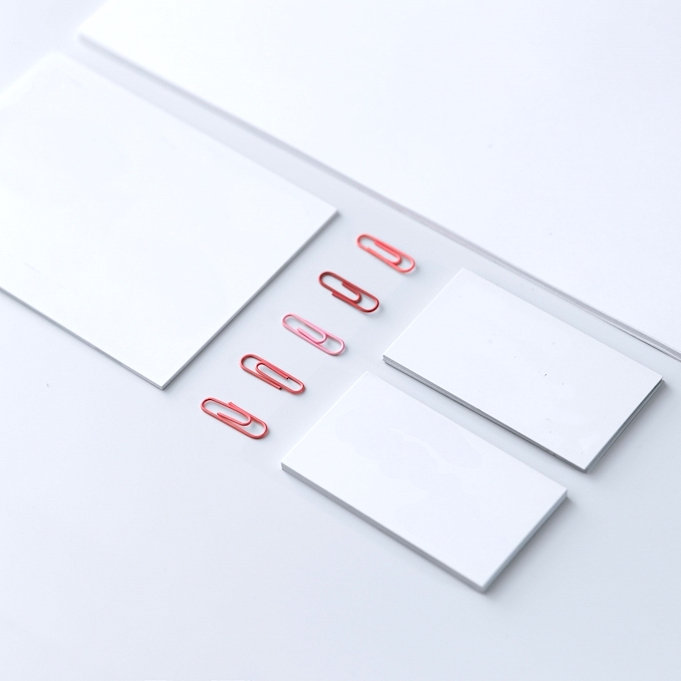
Do you need to organize papers in your home or office?
Are you interested in some simple ways to put things in order create some practical structures, ASAP?
While technology is seemingly everywhere nowadays, the reality is that we still have to deal with paper on a regular basis.
From sticky notes, to notebooks, to magazines, to mailers, and beyond…it seems like there’s no end to the influx of paper in our lives.
Even if it feels like you’re drowning in paper, you can still get things under control.
You need to set up the necessary structures and putting in time and energy to keep things tidy.
In this post, I offer some tips on how to easily organize papers.
You can these tips to help you corral paper and sort through stacks of paperwork.
And remember, you don’t have to organize an entire room of papers all at once.
The paper process takes time and energy, especially if you haven’t touched a stack of papers in several days or weeks.
Organize Papers: Here’s How to Do it!
Corral incoming papers.
Having a centralized location in which to store incoming paper can instantly bring order to a space.
You no longer have to worry about where you’ll put something in a room, plus all of your papers will end up sitting together in a single location.
You can set up a paper receiving area in your home or office by using a postal mail inbox, basket, box, container, or magazine holder.
Anytime paper comes into room, simply place it in the container. Have a bunch of papers that need to be processed?
Simply round up what needs to be processed and place it inside the consider.
Don’t forget: you’re not just going to dump papers into the container and forget about them.
The container is simply a temporary holding location for papers. You’re going to spend some time in the near future processing everything.
Sort papers accordingly.
The next step is to begin sorting or organizing papers.
At this stage, you want to get a better feel for the items that are sitting in your paper container.
This way, you can make a plan to attend to important items, file items as necessary, and remove non-essential items from your space.
So, what’s the sorting process when it comes to organizing papers?
The general idea is to quickly pick up an item, sort it into the appropriate pile, and move onto the next item.
The paper sorting process basically comes down to how you are going to use (or not use) papers in future.
This translates into items that need to be filed, items that need to be recycled, and items that need to be processed.
Let’s take a look at each of these items in detail:
Items to be filed.
This includes any papers whose information has been finalized and needs to be held for your personal, professional, or household records.
Such papers often signify a type of completion: a bill that has been paid, a statement for an account, a record of a business transaction, an update or notice, a job that has been completed, a receipt of product or service, and so on.
Items to be recycled or shredded.
This includes papers that are no longer necessary in your living or work space.
Such papers include obvious trash such as empty postal envelopes, boxes, and mailers, expired coupons and offers, ancient magazines, journals, newspapers, correspondence, invitations, closed files, projects, or assignments, and the like.
Items to be processed.
This includes any type of papers that need to be read, reviewed, booked, confirmed, returned, identified, paid, updated, or evaluated.
You’ll process each of these papers at a later date.
The idea here is to sort things rapidly so you can cut down on the general pile of paper sitting in front of you.
A word of advice: the amount of paper to be sorted and your relative familiarity with a stack of papers will determine your workflow and productivity.
Get your paper sorting muscles up to speed by setting a timer for 5 minutes and sorting papers until the timer goes off.
See how you feel after 5 minutes have elapsed.
If you still feeling strong, set the timer again for 5 minutes and get back to sorting.
If you feel overwhelmed, temporarily set aside your sorting for later in the day.
Group similar items with like.
Once you’ve sorted items into three piles, you can then take the next step, grouping similar items with like.
Before you take another step further, make sure you recycle, shred, or otherwise destroy the papers you no longer need to keep.
It’ll be one less thing to deal with in your space!
Let’s start first with the items that need to be filed.
Like the sorting method we described earlier, you’ll want to quickly sort similar items with similar items. Which items are similar to one another?
Similar items could be cellphone bills with cellphone bills, home insurance notices with home insurance notices, project notes with project notes, product warranties with product warranties, and so on.
You don’t have to worry about sorting items by chronologic order just yet, simply sorting like items with like is sufficient at this point.
When it comes to items that need to be processed, you should sort items into broad processing groups.
This method will allow you to process papers more efficiently, without worrying too much about whether or not you’ll pay a bill by the due date.
These groups might include such things as bills to be paid, services to be renewed, information to be confirmed, details to update, and so on.
Again, you don’t have to worry about sorting items in detail just yet, simply focus on grouping broad items with one another.
Process those papers.
Okay, so you’ve recycled those unnecessary papers, and have organized papers to be processed and filed. What’s next?
Before another moment goes by, you should spend some time processing those necessary papers.
You need sufficient time and energy to process papers.
Schedule some time in your calendar when you’ll be relaxed, well-rested, undisturbed, and focused, to process your papers.
Make sure you have all the necessary tools and materials on hand to do your work, be it account information and passwords, your checkbook, a calculator, a phone, a notepad and pen for making small sums, a calendar for reference, and so on.
If you need more time to process papers, locate information, or deal with an issue, be sure to schedule time into your calendar so you can deal with the issue at hand.
Once you’ve completed processing papers, be sure to move them to your filed stack of papers.
Organize papers in chronologic order.
The next step is to take papers to be filed and organize them in chronologic order.
This step will make it easier for you to file and ultimately locate papers in the future.
Simply start with a grouping of similar items and place them in chronologic order.
For instance, you can round up your stack of cellphone bills and then sort them by most to least recent, such as June, May, April, March, February, and January.
Be sure to keep calendar years into account and sort papers accordingly, such as 2023, 2024, and so on.
Make sure to repeat the process for any other collections of papers in your stack.
File papers accordingly.
After you’ve organized papers in chronologic order, the next step is to file those papers accordingly.
Head over to your filing cabinet and drop in files into the necessary folder.
What if you don’t yet have a household filing system set up just yet? No worries!
Check out this post for ideas on how to organize your filing cabinet and this post for common household files.
And what if you still have a lot more papers to organize and process?
Start at the beginning of this post, and work your way through each of the steps. Repeat for as many times as necessary.
How about you? How do you organize your papers? What seems to be the most challenging part when you organize papers? Join the conversation and leave a comment below!





0 Comments